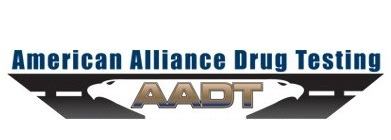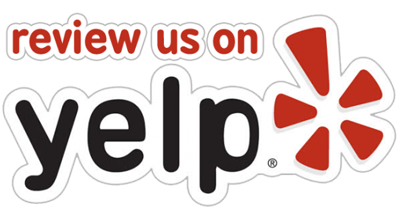Create Your Own Drug and Alcohol Workplace Testing Policy
OPTION – 1) The U.S. Department of Labor’s Working Partners for an Alcohol and Drug-Free Workplace Program Advisory assists users to build tailored drug-free workplace policies and provides guidance on how to develop a comprehensive drug-free workplace program.(Free) ELaw Drug-Free Workplace Advisor www.dol.gov/elaws/drugfree.htm
OPTION – 2) Use our SAMPLE D&A (Drug and Alcohol Testing) Policy. Our MS Word editable version is offered here (DOWNLOAD)
* More details about the D&A Policy below
Make Sure You Have a Well Thought-out
Drug & Alcohol Testing Workplace
Program and Policy
Many companies and public agencies pre-employment test job applicants for illegal drug use as part of the employment hiring process.
In addition, employees may be screened for drug and/or alcohol use where permitted or even required by state and federal law such as those laws relating to commercial truck and bus drivers.
Below is a very short and informative article that summaries the basics and benefits of a Drug Free Workplace and a Drug and Alcohol Testing Workplace Program: How do EMPLOYERS benefit from Drug-free Work Place (PDF)
So make sure you have a well thought-out company drug and alcohol testing policy before it’s implemented.
The following are a few things to remember and some ways for a company/government agency to implement a drug and alcohol testing program through a policy.
- This first is through the U.S. Dept. of Labor’s Workplace Advisory website.
- The second is an updated (March 2014) sample company/agency drug testing policy that details how and under what circumstances job applicants and employees may be tested for drug and alcohol use.
Please Note: There is no substitute for your own legal counsel to advise you on a company policy, but when one is not available these policy options below may help you understand and protect your company with the liabilities associated with a drug and alcohol testing program.
DETAILS ON THE TWO OPTIONS
OPTION – 1) The U.S. DOL ELaws Drug-Free Workplace Advisor
This Advisor assists users to build tailored drug-free workplace policies including guidance on how to develop a comprehensive drug-free workplace programs. It also provides information about coverage and requirements of the Drug-Free Workplace Act of 1988. The Drug-Free Workplace Advisor is one of a series of ELaws (Employment Laws Assistance for Workers and Small Businesses) Advisors developed by the U.S. Department of Labor (DOL) to help employers and employees understand their rights and responsibilities under federal employment laws.
To view the entire list of ELaws Advisors please visit the elaws website.
- For a Custom Drug Free Workplace Policy: See the Builder here: http://www.dol.gov/elaws/drugfree.htm
OPTION – 2) Want to “Do It Yourself” We Can Help!
If you employ safety-sensitive workers or you manage a DOT drug or alcohol testing program, this “Supplemental Drug & Alcohol Testing Workplace Policy” can help you develop an excellent program that meets DOT and local law enforcement requirements.
This is not a legal document that adds to or makes any official interpretations of DOT rules. This publication is for compliance purposes only.
We have provide a sample “Drug and Alcohol Workplace Testing Policy” for all to download and modify the document on their own. Again, there is no substitute for your own legal counsel to advise you on all company/workplace policies.
SAMPLE: D&A (Drug and Alcohol Testing) Policy (DOWNLOAD) – you must be registered
GENERAL INFORMATION
Other things to considered when drafting and implementing a Workplace Drug & Alcohol Testing Program and Policy
A. On AADTs website
There are numerous links under the “Regulations” Tab to websites and documents that will help you learn more about drug and alcohol testing. There is an especially good guide and “best practice” document called: What Employers Need To Know About – that you should read.
B. If a general contractor receives federal funds including construction and transportation contracts, drug testing is required
The Federal Drug-Free Workplace Act requires businesses with $100,000 or more in a single federal contract to test all of their employees for drug use. This also applies to businesses that receive federal grants.
C. If you test one employee, you should probably test them all
The law does not explicitly say businesses that drug-test must test all their employees. Yet if you don’t, you may open up your business to a host of anti-discrimination lawsuits. Say, for instance, you test only employees you suspect of using drugs – someone might construe this as singling out certain people based on income level, race, gender or other protected status.
D. In some states, in order to test job applicants, you may be required to first offer employment
If your business employs 15 or more people, it must follow the Americans With Disabilities Act, which makes it illegal for any employer to test a job applicant without first making a conditional offer of employment. So, it’s OK to test applicants – but only the ones who have a contingent offer on the table.
E. Test honestly
Don’t try to get a specimen sample from an employee or job applicant without his or her consent – this is unlawful. (So don’t pick up a stray hair from his or her desk or swab a glass rim to send to a lab.)
F. Don’t forget state and city specific laws
Each state has its own set of rules and regulations regarding employee drug-testing. In most states, for example, businesses cannot require employees or job applicants to pay for testing themselves. For cities like San Francisco and Berkeley CA, random drug testing is not permitted. Each state also has its own Drug-Free Workplace program – if you follow the rules and requirements outlined in these programs, you’re afforded certain protections. For example, Tennessee’s law protects participants from lawsuits surrounding the discharge or discipline of an employee when that employee has violated the drug-free policy.
G. Make sure you also create and maintain an injury and illness prevention program (IIPP), which is a proactive process to help employers find and fix workplace hazards before workers are hurt.



